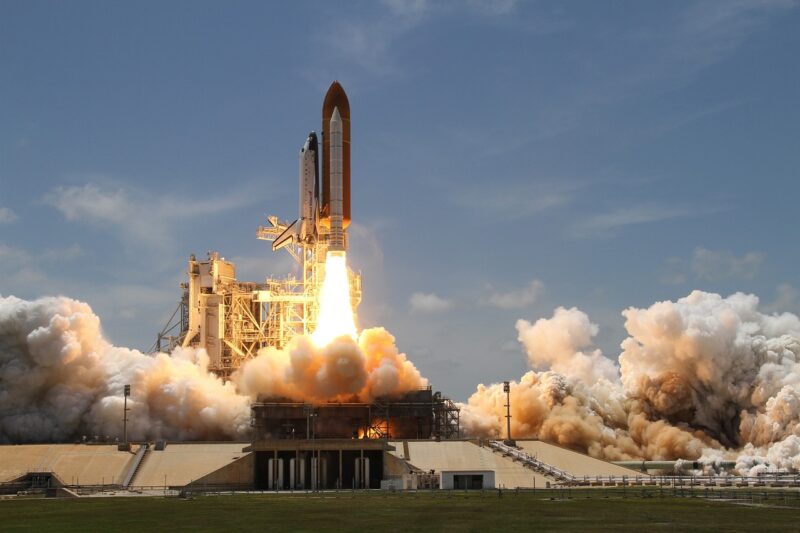
Rockets are one of humanity’s most impressive feats of engineering, allowing us to transcend the boundaries of our planet and explore the cosmos. But what exactly makes these enormous machines lift off into the sky? The answer lies in the fundamental principles of physics, particularly Newton’s Third Law of Motion: for every action, there is an equal and opposite reaction.
This article takes a deep dive into the physics of rocket launches, breaking down the concepts in a way that is accessible and easy to understand. By exploring thrust, propulsion, and the forces at play during a launch, we will illuminate the ingenuity behind rocket science and how it enables human exploration of space.
1. The Fundamental Principles of Rocketry
At the core of rocket science are a few vital scientific principles, most notably Newton’s laws of motion. To grasp rocket launches, we focus on Newton’s Third Law:
**Newton’s Third Law:**
“For every action, there is an equal and opposite reaction.”
In practical terms, a rocket launches by expelling exhaust gases downwards at high speed. This action creates an upward thrust, propelling the rocket into the air. The chemical reactions in the rocket’s engines create this exhaust, highlighting the crucial relationship between mass and velocity, known as the **Conservation of Momentum**.
For understanding momentum:
– **Momentum** is defined as the product of mass and velocity.
– When the rocket expels gas, it throws mass downwards, which results in an upward momentum change for the rocket.
These foundational principles signify that the force exerted by the ejected gas is what lifts the rocket. Understanding them is essential for grasping the incredible mechanics behind rocket launches.
2. Components of a Rocket Launch
The rocket is a complex assembly of various components, each serving a specific purpose to ensure a successful launch:
– **Propellant:** This consists of fuel and an oxidizer, which combust to produce thrust. Liquid oxygen (LOX) is often used in conjunction with fuels like hydrogen or kerosene.
– **Rocket Engine:** The heart of the rocket, where the propellant undergoes combustion to produce high-velocity exhaust.
– **Nozzle:** This component directs the exhaust gases to maximize thrust. The shape of the nozzle is critical for converting thermal energy into kinetic energy.
– **Launch Pad and Support Systems:** These provide stability and various support functions, such as fueling, ground power, and telemetry systems.
The interaction between these components generates the necessary thrust to overcome Earth’s gravity. Effective engineering ensures these elements work flawlessly during the launch to transition the rocket from a stationary position to full velocity.
3. Thrust: The Force Behind the Launch
Thrust is the driving force behind a rocket’s launch. It is generated by the combustion of propellant, which produces hot gases that expand and are expelled from the rocket’s engine.
– **Thrust Equation:** Thrust can be defined by the equation:
**Thrust = Mass Flow Rate x Velocity of Exhaust**
– **Mass Flow Rate** refers to the amount of gas expelled per second, while **Velocity of Exhaust** refers to how fast the gas is moving.
Increasing either factor will increase the thrust produced, enabling the rocket to push against Earth’s gravitational pull.
A rocket launches successfully when the thrust exceeds the gravitational force acting against it. The relationship between thrust and gravity is essential in designing rockets to ensure they achieve the necessary performance during ascent.
4. Staging: Optimizing Performance
Most rockets utilize a technique called staging to optimize their performance. Rocket stages are designed to detach as they expend their fuel. This strategy enhances efficiency in several ways:
– **Weight Reduction:** As each stage is used and jettisoned, the rocket gets lighter, requiring less thrust to accelerate further.
– **Increased Efficiency:** The upper stages can ignite at higher altitudes where the atmosphere is thinner, improving overall fuel efficiency.
Example of Multi-stage Rocket:
– **SpaceX’s Falcon 9:** This rocket includes two stages. The first stage launches the rocket from launch pad to approximately 70 km high. It then detaches, allowing the second stage to ignite and carry the payload into orbit.
The staging process exemplifies efficient engineering practices that enable rockets to reach space and deliver payloads successfully, whether satellites or astronauts.
5. Overcoming Gravity and Air Resistance
The rocket faces two significant challenges during ascent: gravity and air resistance (drag). These forces continually work against the rocket as it travels upwards.
– **Gravity:** The gravitational pull from the Earth acts on the rocket throughout its ascent, requiring constant adjustments in thrust. The rocket must produce enough thrust to overcome this pull to ascend.
– **Air Resistance (Drag):** As the rocket ascends, it encounters atmospheric drag. This resistance slows the rocket’s acceleration and must be compensated by additional thrust.
To combat these challenges, rocket engineers focus on optimizing thrust and the rocket’s aerodynamic design to minimize drag while maximizing uplift. Features such as streamlined shapes and angled fins help rockets cut through the atmosphere as efficiently as possible.
6. The Role of Guidance and Control Systems
For a rocket to successfully reach its target destination, accurate navigation, and control is essential. This process involves:
– **Inertial Navigation Systems:** Utilizing gyroscopes and accelerometers to monitor the rocket’s position and velocity.
– **Control Thrusters:** Small engines positioned on the rocket are controlled to adjust its trajectory as needed, correcting any deviations during ascent.
Through these systems, rockets can follow precise flight paths, maintain stability, and ensure that payloads reach their designated orbits or destinations safely.
Conclusion: The Thrill of Launching into Space
Understanding what makes rockets launch combines physics with engineering ingenuity. The principles of action and reaction dictate that by expelling exhaust gases downwards, rockets can propel themselves upwards against gravitational forces. By incorporating advanced technology and creative solutions, humanity has not only learned how to launch rockets but to explore beyond the confines of our planet.
As we continue to push the boundaries of exploration, each successful launch reminds us of our quest for knowledge and the pioneering spirit that drives us to reach new heights, literally and figuratively. With ongoing advancements in rocket science, the future of space exploration is bright, filled with the potential for discoveries that will surely shape our understanding of the universe.







